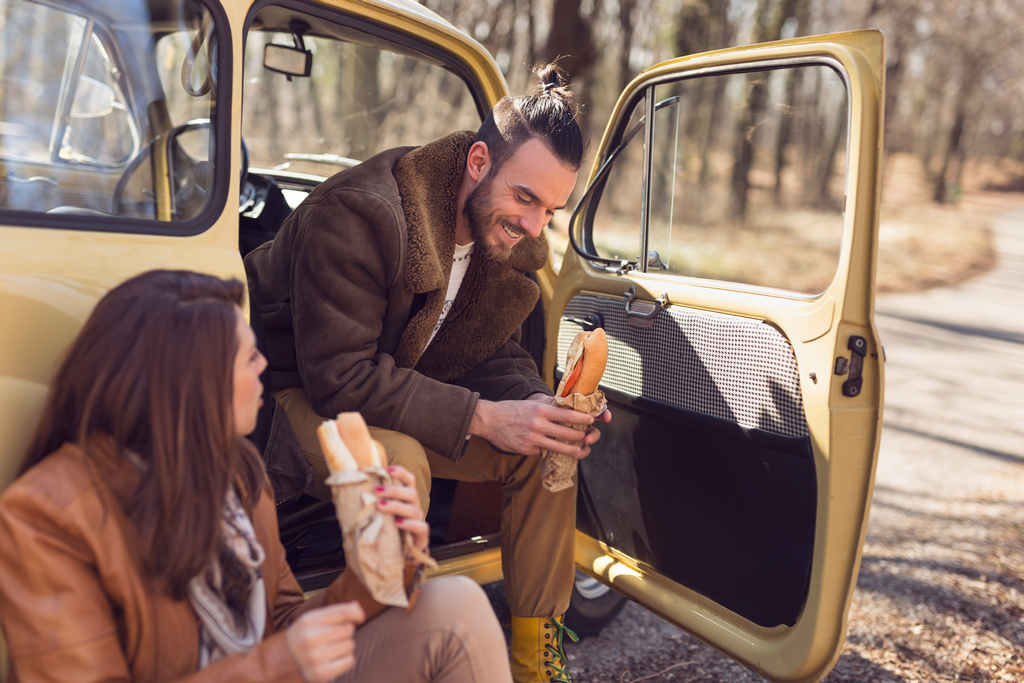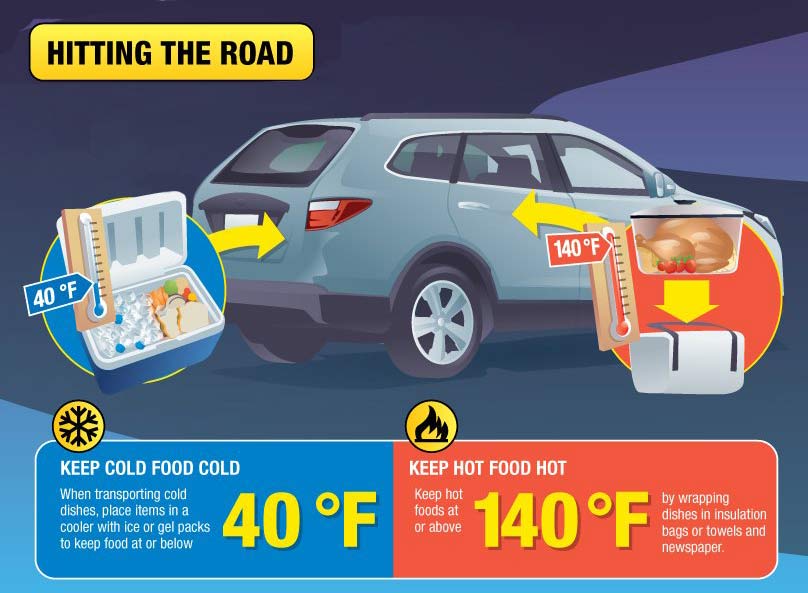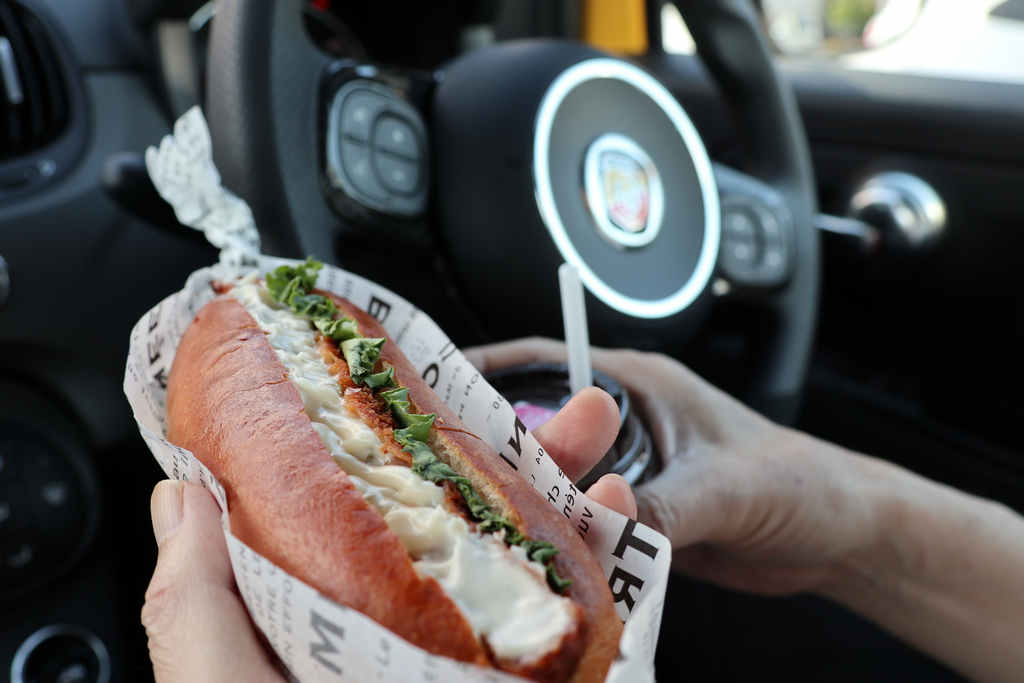Going on a road trip? Don’t forget to pack your food safety knowledge so your trip can be memorable for the right reasons.



Plan Ahead
Before you start packing lunches and snacks, be sure you have plenty of ice or frozen gel packs on hand. Some foods need to stay refrigerated during your trip while others are safe at room temperature. Remember, a fully packed cooler keeps food colder longer than a partially filled one. But, there’s plenty more that you can do to fend off food safety risks.
Foods That Need to Chill
- Deli and lunch meat sandwiches
- Summer salads (tuna, chicken, egg, pasta, seafood)
- Cut-up fruits and vegetables
- Perishable dairy products like milk and yogurt
- Raw meat and poultry to be cooked later
Foods That Can Be Left Out
- Peanut butter sandwiches
- Whole fruit
- Crackers, chips, pretzels, nuts, popcorn, candy
- Bread
Clean Hands
The main rule when it comes to food safety anywhere and anytime – is proper hand washing. Wash your hands with soap and water before you eat and after you use the bathroom.
Protect your family from other disease-causing bacteria by keeping hands clean. Soap and water may not always be available so be sure to pack some moist towelettes and hand sanitizer.
- Learn about proper hygiene, cross contamination, cold and hot food safety, foodborne pathogens, and best practices to prevent foodborne illness.
- Food Manager Training & ANSI Certification - $99.00
- Food Handler Training - only $7.00!
- HACCP Training: 16hr/4hr/1hr
- Food Allergy Training - $15.00
- Enter Promo "train10off" at Checkout
Packing Food for the Trip
- Keep cold food cold. Place cold food in coolers with frozen gel packs or ice. Stashing it at 40°F or below prevents bacterial growth. Meat and poultry may be packed while it is still frozen; in that way it stays colder longer.
- Be sure to keep raw meat and poultry wrapped separately from cooked foods, or foods meant to be eaten raw such as fruits.
- Rinse all fresh produce under running tap water before packing it in a cooler, including produce with peel-away skins or rinds.
- Consider packing beverages in one cooler and perishable foods in another – since you are likely to grab beverages most often.
- Keep hot food hot. That means your best bet when packing is to take a pass on hot food unless you have a portable heating unit that can be safely used.



Food Safety on the Road
- Remember to wash hands with soap and water during food preparation, especially between tasks.
- If you can’t get to a restroom to wash your hands with soap and water, pack moist towelettes or a hand sanitizer to clean up before digging in.
- Don’t let food sit out unrefrigerated for more than two hours; in hot weather (above 90°F), the time is reduced to one hour.
- In hot weather, transport food in a cooler (packed with ice or ice packs) in the back seat of an air-conditioned car instead of the trunk.
- If you don’t have access to a cooler, try packing frozen juice boxes or bottles of water for a hydrating refresher that will also help keep other foods around them cool.
- If you plan to cook family favorites like hamburgers, hotdogs or chicken breasts at home to take with on your trip, remember to cook to proper temperatures: hamburgers (at least 160°F), hot dogs (reheated to 160°F), and chicken (165°F).
- Consider packing easy-to-transport, shelf-stable foods: single-serve boxes of cereal, trail mix, popcorn, single-serve applesauce, cans of tuna peanut butter sandwiches, fresh fruit, carrots or celery.
- Don’t forget that carry-out and fast-food are also susceptible to food poisoning. Eat fast food within two hours; in hot weather (above 90°F), the time is reduced to one hour.



Food Safety on the Road
To ensure a memorable road trip – for the right reasons – make sure to follow important food safety principles and procedures.






